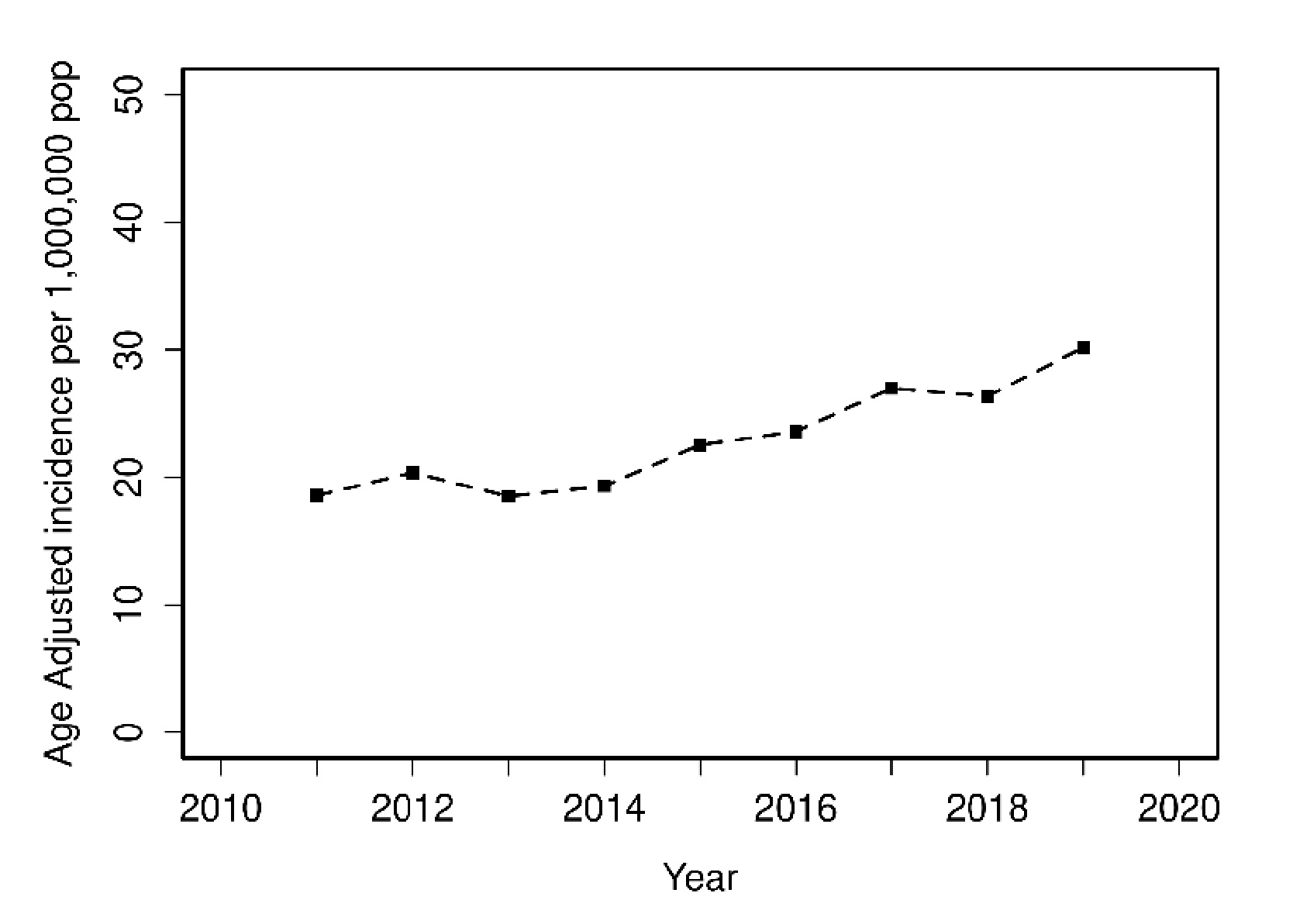Session Information
Session Type: Poster Session A
Session Time: 9:00AM-11:00AM
Background/Purpose: Systemic Sclerosis (SSc) is a rare chronic inflammatory disease characterized by immune-mediated dysfunction, vasculopathy and widespread internal organ fibrosis; and the highest case fatality among all rheumatic diseases. We aimed to study trends in incidence and mortality in a physician-diagnosed population-based cohort of SSc patients.
Methods: An inception cohort of incident SSc patients aged ≥18 years with a confirmed physician diagnosis of SSc made by a rheumatologist (supported by compatible clinical presentation, autoantibody testing, and/or appropriate imaging) between Jan 1, 2010, to Dec 31, 2020, was identified based on comprehensive individual medical record review. Fulfillment of ACR/EULAR 2013 criteria was ascertained. Patients were followed until death, migration from the geographic area, or Sept. 30, 2022. Incidence rates were age- and sex-adjusted to the 2020 US white population. Survival rates were compared with expected rates in the general population.
Results: A total of 146 incident SSc patients (81% female, 90% White, mean age 59.5 ± 13.6 y) were identified between 2010-2020. A 138 (94.52%) met the classification criteria for SSc. The overall age- and sex-adjusted annual incidence was 23.4 (95% confidence interval = 19.6–27.3) per million population, with a significant increase in incidence over time [SIR (Standardized Incidence Ratio) per 10-year increase=1.92, 95% CI = (1.67-2.20)]. Age-adjusted incidence was 36.7 (95% CI = 30.0-43.3) per million for females and 9.5 (95% CI = 6.0-13.0) per million for males. Thirty patients died during the study period. Patients with SSc had significantly higher mortality compared to the general population, with a standardized mortality ratio of 3.46 (95% confidence interval = 2.34-4.95). (Table 1 and Figure 1)
Age, smoking (current and ever), diffuse cutaneous disease, telangiectasias, digital ulcers/pitting and significant internal organ involvement (interstitial lung disease, pulmonary arterial hypertension, renal crisis) were associated with a higher mortality risk. (Table 2)
Conclusion: In this population-based cohort, the incidence of SSc has been rising, by nearly 2-fold in the last decade. The reasons for this need better understanding but could in part be explained by better recognition of SSc with newer classification criteria. The survival in SSc remains poor, with more than 3-fold higher mortality than the general population with no evidence of improvement over time, highlighting an urgent need for better therapeutics to modify disease activity and course in this morbid disease.
To cite this abstract in AMA style:
Karn A, Achenbach S, Hinze A, Crowson C, Makol A. Rising Incidence and High Mortality of Systemic Sclerosis: A Population-based Cohort Study (2010-2020) [abstract]. Arthritis Rheumatol. 2023; 75 (suppl 9). https://acrabstracts.org/abstract/rising-incidence-and-high-mortality-of-systemic-sclerosis-a-population-based-cohort-study-2010-2020/. Accessed .« Back to ACR Convergence 2023
ACR Meeting Abstracts - https://acrabstracts.org/abstract/rising-incidence-and-high-mortality-of-systemic-sclerosis-a-population-based-cohort-study-2010-2020/



